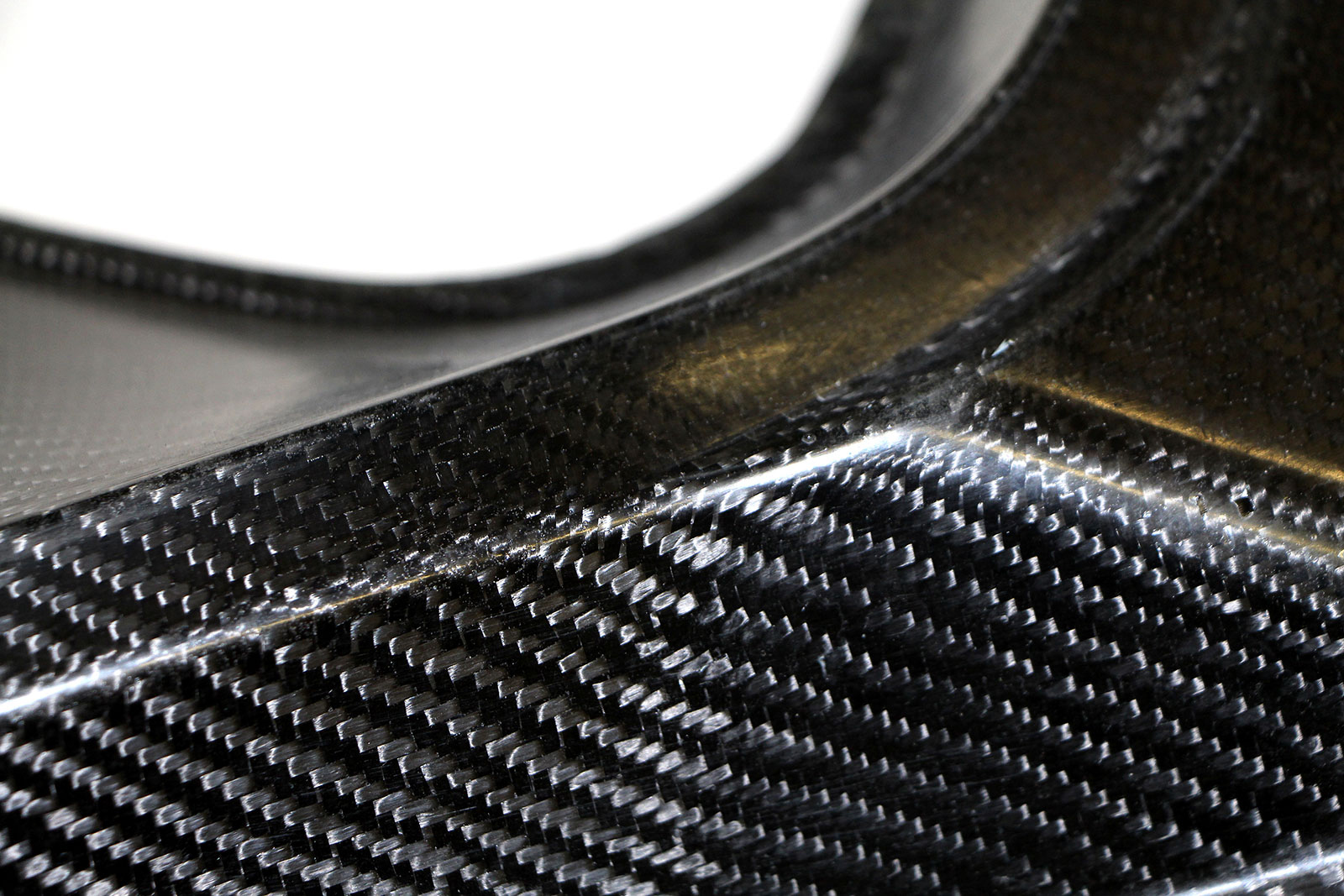 Carbon and hemp-fiber reinforced component. (© Fraunhofer WKI)
Carbon and hemp-fiber reinforced component. (© Fraunhofer WKI)
Researchers at the Application Center for Wood Fiber Research HOFZET of the Fraunhofer Institute for Wood Research, the Wilhelm-Klauditz-Institut WKI in Braunschweig have discovered a new research approach that has enabled the creation of lightweight and cost-efficient vehicle body for automobiles.
Synthetic materials are reinforced using glass and carbon fibers in order to render them useful for construction of automobile body work. Although carbon fibers are used in the construction of Formula 1 racing car body components, they are expensive. Glass fibers, which are cheaper in comparison, are heavy. Natural fibers attained from cotton, hemp, or wood are looked at as viable solutions to produce light yet very sturdy components, especially when integrated with carbon fibers.
Automotive engineering sector and the aerospace sector are keen to use “lightweight” materials for their products. Fiber reinforced synthetics are of particular interest to car manufacturers, as these materials provide extra durability when embedded into a synthetic matrix.
One of the major reasons why researchers are starting to focus on botanical natural fibers such as variations procured from flax, hemp, cotton and wood, is that they are as reasonably priced as glass fibers and possesses a lower density than pendants made of carbon or glass. On the environmental front, these natural fibers do not leave any residues when burnt for producing energy at the end of their life cycle. The major downside is that they cannot match the stability and durability of carbon fibers.
Depending on the application, we are therefore combining carbon with various bio-based textile fibers.
Prof. Dr.-Ing. Hans-Josef Endres, head of the Application Center for Wood Fiber Research
These fibers mostly resemble fabrics that are positioned on each other and are surrounded by the plastic matrix.
We use carbon fibers in those areas where the part undergoes intense mechanical stress; in other areas, it’s natural fibers. This way, we can leverage the strengths of the respective fibers and get rid of the disadvantages to a great extent.
The outcome is that the components are cost-effective with excellent degree of durability coupled with superior acoustic properties, and are considerably more ecological than pure carbon parts.
Generally, the surface of the natural fibers is run via the textile equipment, to enable processing into fabrics. In textile production, this is called “sizing the surface of the fiber”. But if composite materials have to be processed, this process is mostly counterproductive. “This is why, from a material’s engineering perspective, we optimize the surfaces of the fibers,” says Endres.
So as to make certain that the fibers can be integrated and act together in an ideally manner with the plastic matrix, specialized surface treatments or coatings is proposed. “By ensuring that the fibers bond to the matrix optimally, we can increase the durability of the materials by up to 50 percent,” Endres explains in concrete terms. However surface treatments of textile fibers for reinforcement are quite a new concept to researchers.
The researchers have not only focused on developing the new composite materials but also have been analyzing the way in which these new materials can be processed at an industrial scale. They are working out a plan for disposing these new materials as these materials can be tough to recycle, and also a method to reprocess them at least as separate components so that they can be used for new application.
At nature.tec professional trade show at the Grüne Woche held between January 16 and 25 in Berlin, Germany, the researchers will present several textile bio-based hybrid materials in Hall 5.2A. They will also showcase fiber form-pressed parts for the automotive sector. The fibers within these parts are placed into either a plastic matrix, which can be molded at very high temperatures, or into a duroplastic synthetic matrix which when fully hardened loses its formability.
References